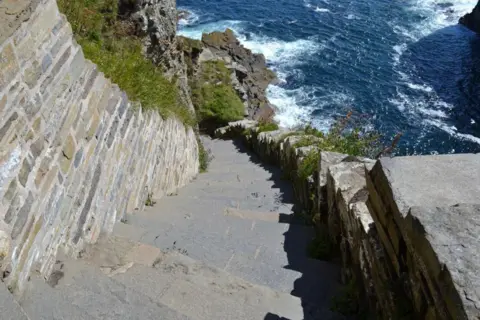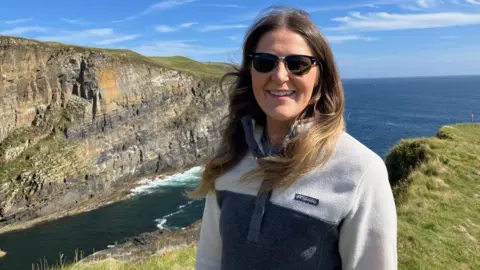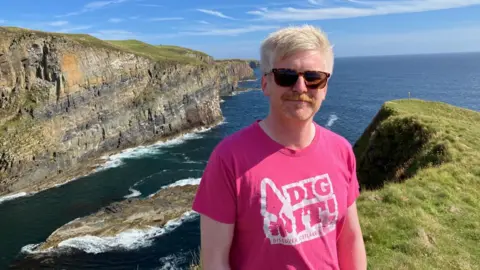Stepping up trail tourism on the Caithness coast
Access improvements have been completed near a viewpoint overlooking one of Scotland's most dramatic harbours.
A landing area was created at Whaligoe, near Wick, in the 1790s during a boom in herring fishing.
A zig-zagging flight of more than 300 steps were cut into a 250ft cliff to reach the harbour, and women would carry baskets of fish from boats up to the clifftop for onward transport to market.
A new wooden crossing has been built near Whaligoe Steps as part of wider efforts to boost tourism around long-distance walking routes on the Highlands' north coast.
Whaligoe is a stop on the John o'Groats Trail, which stretches for 147 miles (236km) from Inverness to John o'Groats.
The Association of Northern Trails Scotland charity had the new crossing installed at an area which gets muddy and slippery in wet weather.
The area is popular with visitors, but parking at Whaligoe is limited and the stretch of Caithness coastline is also dominated by high cliffs.
Wind and rain can bring added challenges and comedian Billy Connolly, visiting on a blustery day for his TV show World Tour of Scotland, described it as a place where waterfalls went up rather than down.



The Association of Northern Trails Scotland is working on plans to create a new long-distance trail further north, between John o'Groats and Cape Wrath.
The new 150-mile (241 km) route could potentially link up with the John o'Groats Trail and also the 240-mile (386km) Cape Wrath Trail.
An initial phase of work is focused on creating a safe route along the Caithness coast, before moving on to sections in Sutherland.

Trail development manager Laura Gray said: "The trail would be suitable for local communities to access and also long-distance walkers.
"We hope a way marked trail would help people to exercise their right to responsible access and explore the environment in a responsible and respectful manner."

Fellow trail development manager Kenneth McElroy said it was hoped the project would encourage slow tourism, which involves visitors taking more time to explore an area, and economic growth.
He said: "I think this coast really lends itself to a sense of dynamism. It is constantly changing and evolving.
"You are always seeing something new - a boat, or a historical site or a new distillery.
"I have lived in Caithness for 30 years and I discover new things every day along the coast."


